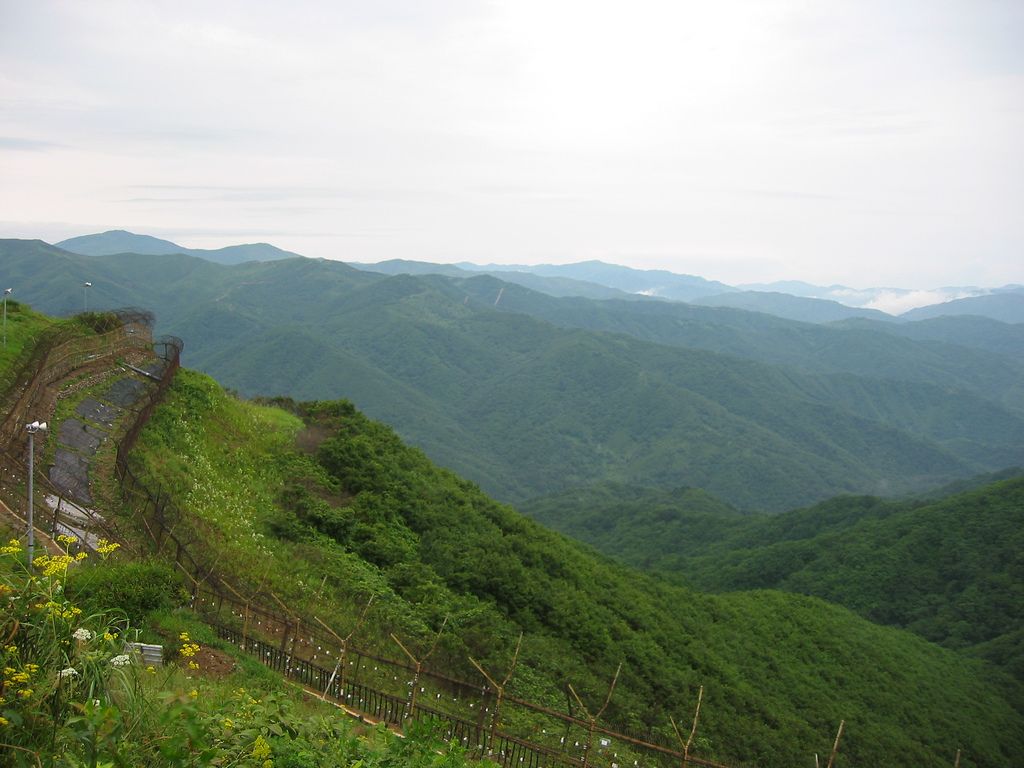How Korea’s Demilitarized Zone Became an Accidental Wildlife Paradise
Hundreds of rare animal species take shelter in the 155-mile no man’s land between North and South Korea
:focal(1703x836:1704x837)/https://tf-cmsv2-smithsonianmag-media.s3.amazonaws.com/filer/64/3f/643f10f2-7c2c-4fd6-861b-24bfa0fc6caa/dmz-cranes.jpg)
You likely know the red-crowned and white-naped cranes as the graceful, long-legged avians that grace Asian artwork throughout history. But if numbers of these birds keep declining, art may be the only way we can see them anymore – the red-crowned crane is now endangered, while the white-naped crane is listed as vulnerable. Thankfully, there is one last bastion of habitat where both cranes mingle together: the Korean Demilitarized Zone (DMZ), the strip of land between North and South Korea that’s off-limits to people, created during armistice negotiations for the Korean War.
Beyond the Joint Security Area (one of the few spots tourists are allowed to visit at the DMZ), the landscape in the safe zone—stretching about a mile in either direction from the border and covering about 155 miles between the two countries—has sat untouched for the past 65 years, surrounded by barbed wire and watched over by thousands of soldiers on both sides. Before the Korean War, much of the DMZ, particularly the low wetland areas, was cultivated farmland. But where people are unable to go, nature has a tendency to take over, and the DMZ, which varies dramatically in landscape from mountains to marshes, has morphed into an unexpected haven for rare wildlife. According to the Republic of Korea Ministry of Environment, 5,097 animal and plant species have been identified in the area, including 106 that are labeled as endangered or protected.
“Yes, the DMZ is tense and there can be fighting,” a South Korean army guard said in an interview with USA Today in 2014. “But this war has also given us a source of beauty.”
But tracking wildlife populations in the DMZ can be challenging at best. Because much of the area is off-limits and peppered with landmines, getting exact and up-to-date counts is often impossible. Two animals in particular, the Amur leopard and the Siberian tiger (two of the most endangered cats in the world), have been reported by observers but never definitively recorded as having a habitat in the DMZ.
Hall Healy, an emeritus director at the International Crane Foundation, wrote for the International Journal on World Peace that "field and literature surveys have been conducted to assess biological resources of the area, which detail a wide range in the numbers of species: from 256 to 1,597 plants, 4 to 66 mammals, 143 to 939 animals other than mammals, 49 to 233 birds, 6 to 46 amphibians and reptiles, 13 to 98 freshwater fish and 50 to 535 insects. The estimates emphatically portray the vast richness of the area. They also are symptomatic of the lack of direct access to the DMZ itself."

To experience the wildlife yourself, the best options are the Hwajinpo History and Security Museum or the Peace and Life Zone Tour. The History and Security Museum is located between a pine forest and Hwajinpo Lake, a rare lagoon in the Korean landscape. Thousands of migratory birds come here every year, including the rare red-crowned and white-naped cranes. The forest next door is home to vulnerable species like musk deer, Asiatic black bears and antelope-like goats known as Amur gorals. Admission to the museum (which is located in the summer house of former president Rhee Syngman) also includes entrance to the Villa of Lee Ki-poong, the Castle of Hwajinpo (the childhood home of Kim Jong Il) and the Ecology Museum.
The Peace and Life Zone is a portion of the buffer area along the DMZ that has been rebranded to draw attention to its role as an accidental animal sanctuary. Here, visitors are likely to see cranes and other migratory birds.
“The crane is well known to bring long life and good fortune, and crane images are seen everywhere at the New Year, when we make our wishes,” Dr. Kim Sooil, an environmental biology teacher at the Korean National University of Education, told Peter Matthiessen in a 2014 article for Audubon. “And now—because they are most numerous in this border region, where so many thousands of men died before the armistice—the crane is our symbol of peace. And that is because reunification is our dream.”
For now, other tours of the DMZ's military fortifications are reminders that the peninsula is still very much divided. But as you head to the visitor’s center in the Joint Security Area or peer out over the DMZ from the Oduscan Unification Tower, keep an eye on the underbrush for the area's unanticipated inhabitants.
Planning Your Next Trip?
Explore great travel deals
Smithsonian magazine participates in affiliate link advertising programs. If you purchase an item through these links, we receive a commission.
/https://tf-cmsv2-smithsonianmag-media.s3.amazonaws.com/accounts/headshot/JenniferBillock.png)
/https://tf-cmsv2-smithsonianmag-media.s3.amazonaws.com/accounts/headshot/JenniferBillock.png)